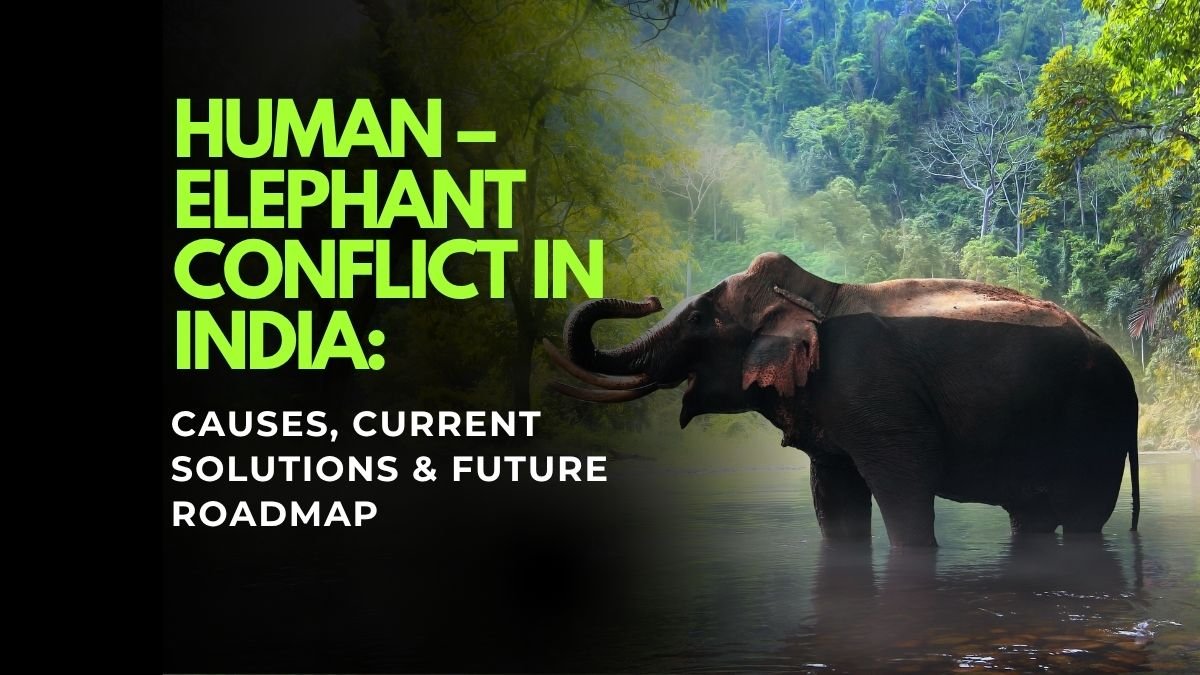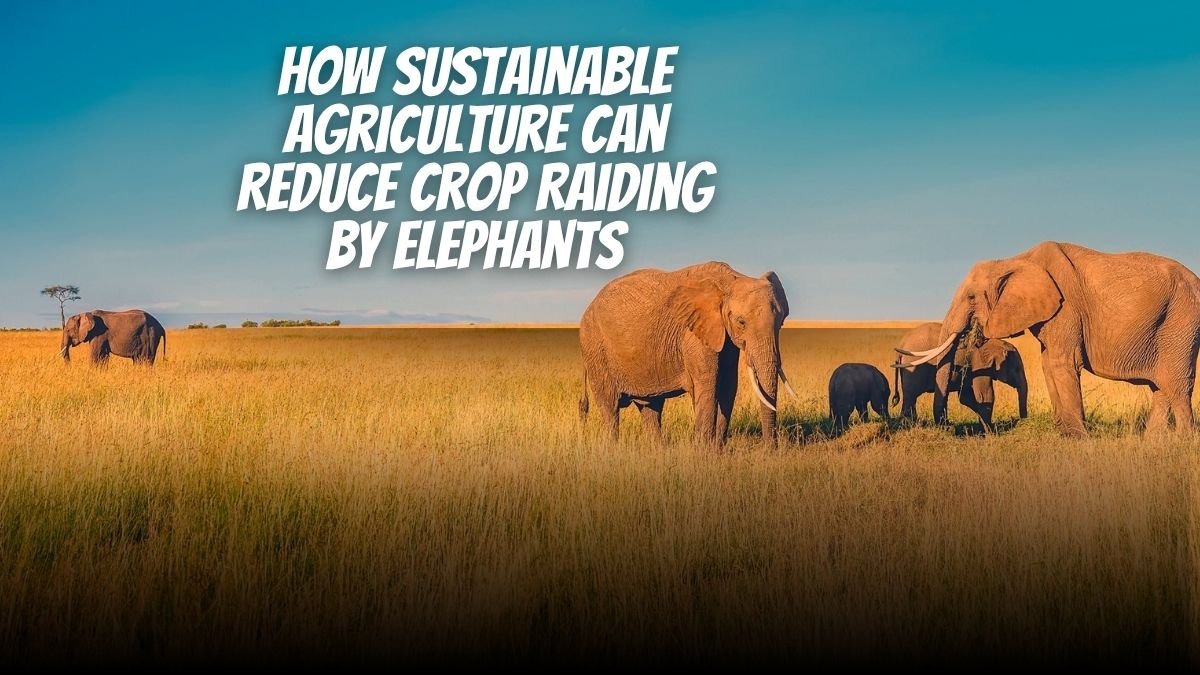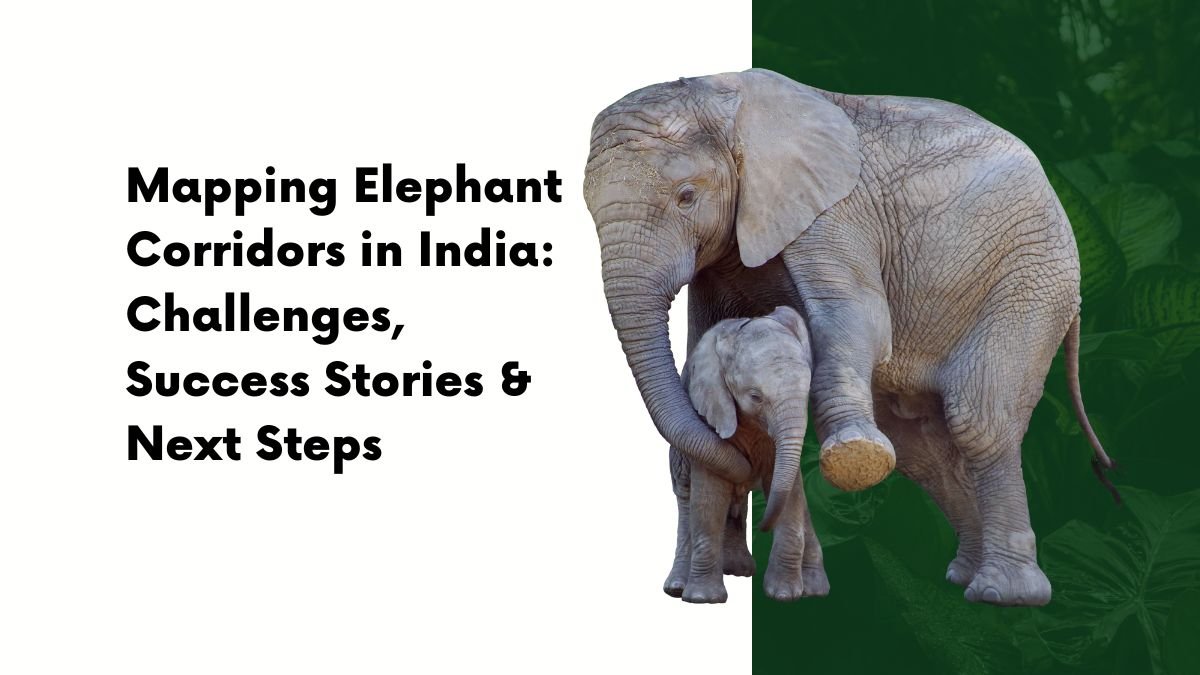In a country like India where forests, villages and cities are very close to each other, conflict between humans and wildlife is not a new thing. But in the last few years, human-elephant conflict has emerged as a serious problem. This problem is not only dangerous for humans, but is also questioning the existence of elephants.
In this article, we will know in detail why this conflict occurs, what measures are being taken so far and what should be done in future so that both humans and elephants can live together peacefully.
Why is human-elephant conflict happening?
1. Depletion of forests and division into pieces
Continued forest destruction is the major reason. The more habitats are cleared for agriculture, roads, colonies, and industries, the lesser the space for the elephants. An elephant eats about 150 to 200 kg of food in a single day and can walk for several kilometers. It is here that the elephants find themselves right in the homes of people when crossing walls, fields, or villages.
2. Increase in population
Along with humans, the number of elephants is also increasing in India. Due to this, there is a shortage of space and food in the forests. Elephants are forced to enter human fields and eat and this becomes the reason for conflict.
3. Food crisis and attack on crops
Elephants love crops like sugarcane, banana, paddy, maize. When they do not get food in the forest, they enter the fields and eat them. This causes huge losses to the farmers and many times farmers try to kill the elephants in anger.
4. Lack of information and lack of planning
Even today, people in many villages do not know how to understand the behavior of elephants and how to deal with them. There are also irregularities in land use planning in the government’s plans, due to which elephant corridors have disappeared.
What solutions are being adopted at present?
Immediate or short-term solutions
Scaring away elephants
People in villages try to scare away elephants from the fields by playing drums, lighting torches, bursting crackers or throwing stones. But many times this makes the elephants more aggressive.
Anti-depredation squads
The government has formed special squads at some places which reach the spot as soon as they get information about the arrival of elephants and drive them away with torches, loudspeakers, jeeps etc.
Early warning system
Now in some places, the activities of elephants are monitored through modern technology like GPS collars and sensors and the villagers are alerted in time.
Long-term and sustainable solutions
Creation of elephant corridors and restoration of forests
It is important to redevelop the traditional migration corridors of elephants so that they can move from one forest to another without colliding with humans.
Community-based strategies
Villagers have to be made partners in elephant conservation. As they realize that elephants are not their enemies, the conflict will reduce.
Compensation schemes
The government should give timely and proper compensation to farmers for crop loss, so that farmers do not harm elephants.
Training and awareness
Camps should be organized in villages to teach people when elephants can be dangerous, how to understand their signals and how to drive them away peacefully.
Alternative means of employment
In areas where people are heavily dependent on forests, they can be given alternative means of income such as eco-tourism, beekeeping or handicrafts.
Electric or Beehive Fence
In some places, beehive fences are put around the fields to stop elephants because elephants are afraid of bees. This saves the crop and also generates income from honey.
Future direction: What should we do now?
1. Need for a national policy
There is no concrete and national level policy regarding elephants in India till now. A policy should be made which has a budget, an action plan and is implemented at the ground level.
2. Adopt an integrated approach
We have to plan keeping in mind the needs of not only elephants but also humans. Only by understanding the needs of both can a permanent solution be found.
3. Research and monitoring
Research should be done on the behavior of elephants, their movement, the impact of climate change on their population etc. so that we can understand them better.
4. Involvement of local people
The government, forest department, NGOs and villagers—all need to be brought together on one platform to work towards reducing conflict.
5. Moving towards sustainable development
We need to adopt development models that reduce deforestation, take construction away from forests and maintain biodiversity.
6. Promote education and coexistence
Through the schools and villages, the media should be able to teach that elephants are an important part of our environment, and we will have to learn to live by them.
Conclusion: Can humans and elephants live together?
Absolutely! If we think, plan and take everyone along, human-elephant conflict can be reduced to a great extent. We need to realize that this earth is not just for humans. It is not simply a matter of wildlife conservation. Saving elephants must be related to making possible a balanced environment for future generations.
If you have seen elephants just walking quietly through their forest, then I think you would appreciate the high degree of intelligence, sensitivity and sociability that these animals are endowed with. They do not feel our fear or our anger.
We should not fall prey to greed, rather we should learn to live in harmony with them.
Peace is possible only when we humans understand forests, leave space for them and move forward in harmony with nature.















